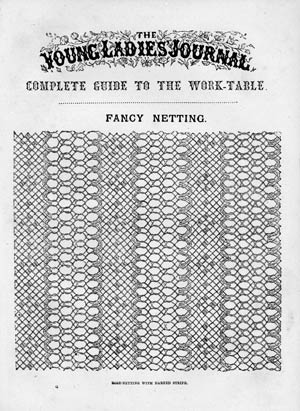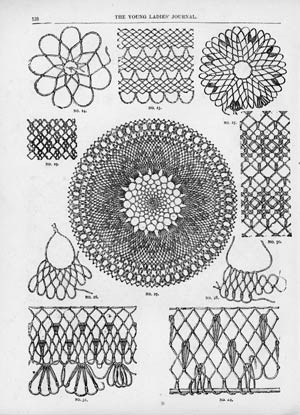![]()
NOTES ON ISSUE 8: GLOSSARY
Her father was usually
sifting and sifting at his parliamentary cinder-heap in London (without being
observed to turn up many precious articles among the rubbish), and was still
hard at it in the national dust-yard.
Heaps of dust-yards (that is, garbage dumps) surrounded London, largely composed
of ashes from the many coal fires in the metropolis's homes. They were literally
"sifted" by the very poor, who were looking for valuables as well
as any saleable material. According to Henry Mayhew's London Labour and the
London Poor, a great amount of the city's trash was reusable and could be
sold: old boots and shoes were sold to manufacturers of Prussian blue, bricks
and oyster shells went to builders (for foundations) and road-builders, cinders
went to brick-makers for burning bricks, and fine soil went to brick-makers.
Mayhew includes this illustration, which shows the dust-sifters at work.
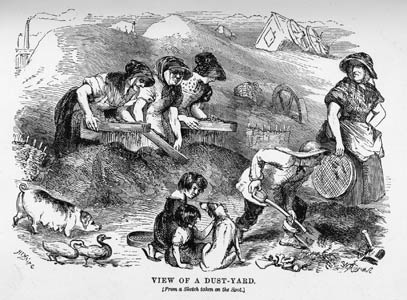
anchorite
A hermit.
Alderney
Alderney cattle were a breed of dairy cow from the Channel
Islands, known for their milk (like the better-known Jersey cattle). This illustration
of Alderney cattle appeared in the Illustrated London News on December
9, 1848.
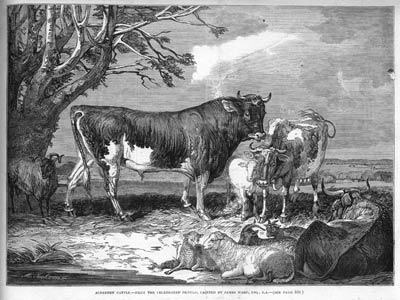
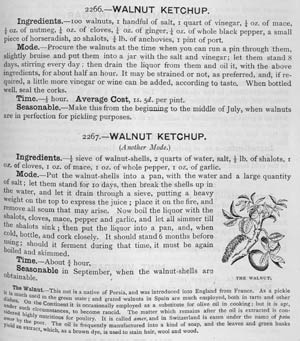
"He is shooting in Yorkshire," said
Tom. "Sent Loo a basket half as big as a church, yesterday."
Shooting at country estates was a seasonal hobby for
the upper classes, who shot such game as grouse, partridges, and pheasant on
the property of large land owners during the autumn and winter hunting seasons.
Tenants on the estates were generally not allowed to hunt for such game; their
leases reserved it for the squires and nobility who owned the land. Baskets
of game, therefore, were a special treat for those connected with the upper
class.
The Illustrated London News frequently marked the hunting season with
an illustration of shooting. This engraving depicting a pheasant-shooting party
appeared on February 4, 1843.
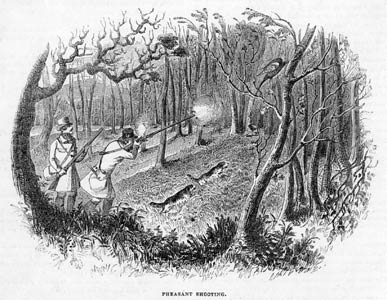
she was so quick in pouncing on a disengaged coach,
so quick in darting out of it, producing her money, seizing her ticket, and
diving into the train, that she was borne along the arches spanning the land
of coal-pits past and present as if she had been caught up in a cloud and whirled
away
Mrs. Sparsit's impromptu train journeys in this episode
show the degree to which local as well as national travel had been speeded by
the vast growth of the railways in the first half of the nineteenth century.
Throughout this chapter, the plot of Mrs. Sparsit's pursuit of Louisa depends
on the frequent availability of fast local transit.
A mid-nineteenth-century map drawn by J. Bartholomew, Jr., "Railway Map
of the British Isles exhibiting all the Railways & Canals in England, Scotland
& Ireland completed or in progress with their respective stations," shows
the extent of the railway network in Britain at around the time Hard Times
was written.
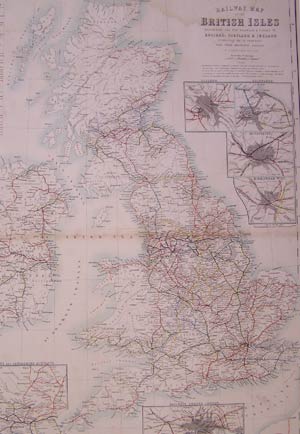
Click
on image for larger view
The following detail from the same map shows the extent of the local railways surrounding Manchester.
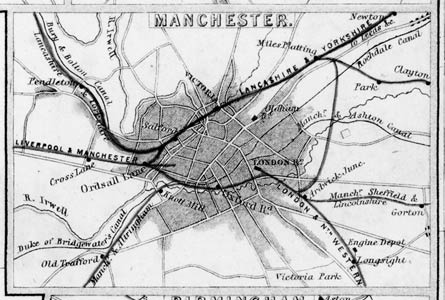
A few years before the writing of Hard Times, on April 15, 1848, the Illustrated London News printed an illustration of the railway network in the same region, extending from Liverpool and Manchester to Sheffield to Lincolnshire.
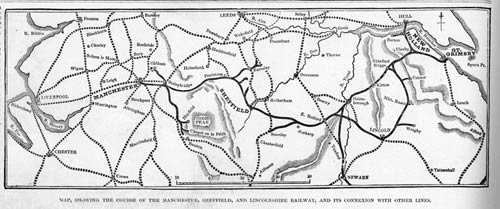
Click
on image for larger view
the electric wires which ruled a colossal strip
of music-paper out of the evening sky
Electric wires lined the railways as far north as Glasgow by 1840; after the
mid-1840s, telegraph poles became more and more common as well. Thus electrical
lines were a common sight from train windows at the time of the novel's composition.
The national dustmen
That is, Members of Parliament. For more on the comparison of Parliamentary
work to dust-heaps, see note above.
